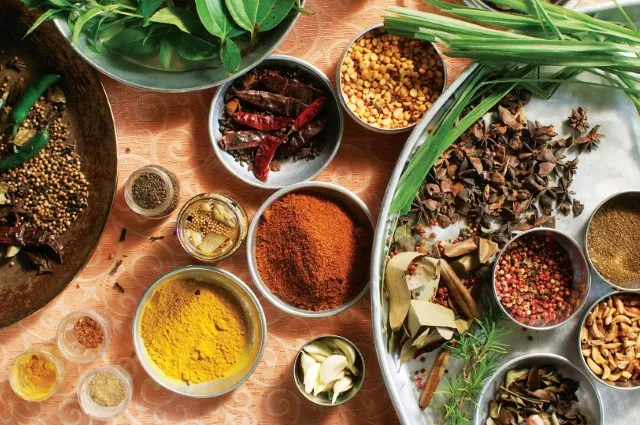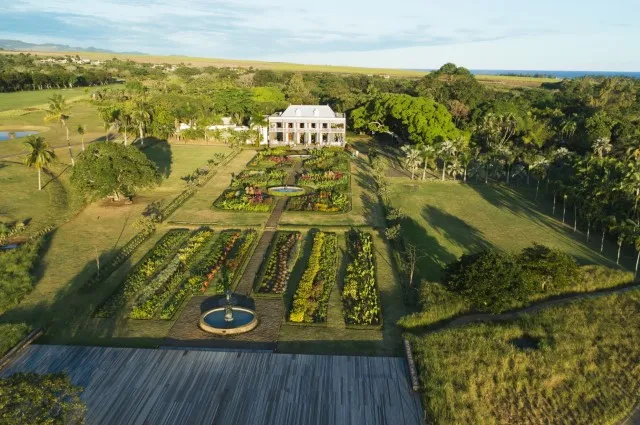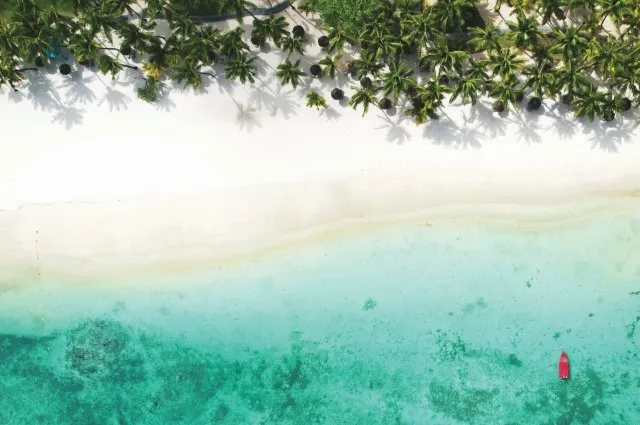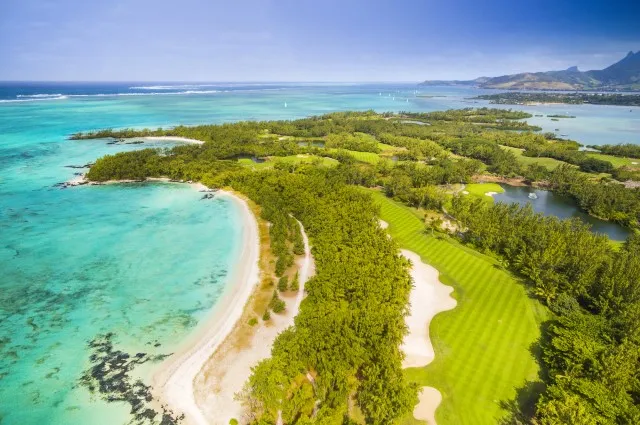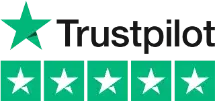Get in touch with our Mauritius specialists Dan, Jo & Liz today by email, contact form or by calling +44 (0)1580 712 690
Luxury Boutique Holidays in Mauritius
Mauritius, a kaleidoscope of colours and cultures, is a tropical paradise that beckons discerning travellers. With its pristine beaches, dramatic landscape, and exciting cuisine, the island offers a unique luxury experience.
At Angelfish Travel we specialise in tailored luxury holidays to Mauritius. Our expertise in curating unforgettable bespoke holidays ensures that every moment promises something special from exciting discovery to pure indulgence.
Unlike neighbouring Reunion, Mauritius has no active volcanoes, although remnants of volcanic activity - such as Trou aux Cerfs crater in Curepipe and millions of lava boulders - pepper the island.
In 1598 the Dutch landed and spent the next 112 years plundering the island's valuable ebony forests and hunting the Dodo to extinction. On the plus side, they introduced sugar cane. But Cyclones, famine and disease, along with attacks by pirates and unrest among slaves forced the Dutch out, the last of them leaving in 1710.
The French took possession of the island in 1715. The next 100 years saw the rise and fall of Mauritius as a French strategic base and trading centre in the Indian Ocean. Although in 1763 the French lost the war against the British in India it was still able to hold on to the shipping routes through Mauritius. However, in 1810 a British Force landed on the island and took control. Under British rule the island continued to prosper, mainly through the export of sugar. British rule lasted until 1968 when Mauritius and Rodrigues became independent.
Following the abolition of slavery in 1835 an additional workforce was recruited from India and China. The cosmopolitan mix was further enhanced by the Creoles, a people of mixed African and European lineage.
Indian cuisine is another favourite, with snacks such as poppadums, samosas and chilli bites often sold on street stalls.
Chinese food is also very popular, with familiar dishes such as pork fooyong and sweet and sour fish common.
There are additional requirements for those travellers arriving in Mauritius who have previously visited a country with a risk of yellow fever. Your doctor or health professional will be able to advise, but it is likely that you will have to produce proof that you have had the yellow fever vaccination when you arrive in the country.
Further advice can also be found on the Foreign and Commonwealth Office Travel Advice and the NHS Fitfortravel website.
You may also be required to provide evidence of return travel.
In addition please ensure your passport is valid for your period of stay (we recommend having 6 months validity) and that there is at least one blank passport page.
For sea lovers, catamarans, sailing boats, and even a submersible will give you plenty of opportunities to see the marine life on offer in Mauritius.
For exercise lovers and for those who want to take a bit more time to enjoy the scenery why not take to the hills for some walking, hiking or horse riding or hire a bike and enjoy rides along the beaches.
Port Louis is small but well worth a visit. It has a lovely spice market and a small array of shops. You can also begin to understand the diverse culture that exists in the country as Port Louis home to some of Mauritius's main religious buildings and temples.
The area of Grand Baie is where the nights come to life in Mauritius, with live street bands working in harmony with local nightclubs, bars and restaurants. There is also a promenade of shops where you can buy souvenirs and local curios.
Other attractions in this part of Mauritius include L'Aventure du Sucre, where you can tour the old sugar factory and learn about the history of sugar in Mauritius. At the end of your tour you will find yourself in the factory shop where you can taste (and buy) a wide variety of sugar.
Also not to miss is Pamplemousses Botanical Gardens. Allow yourself plenty of time to wander around these lovely gardens.
The main coastal town on the West Coast is the once-small fishing village of Flic en Flac, now a popular tourist destination second only to Grand Baie. Like Grand Baie, there are a number of hotels and resorts supported by local shops, bars and restaurants.
Just inland you will find a selection of nature parks. If you are looking for thrills, then Casela Park offers you wildlife and great views alongside quad biking, zip lining and jeep rides. For sheer beauty and the opportunity to hike, a visit to the Black River Gorges should be on your list. Enjoy one of the many trails that take you inside the gorges itself.
Considered one of the prettiest villages in Mauritius, Chamarel should be included on your list of places to visit. During your time here you will be able to admire the magnificent cascades of Chamarel waterfall, and it is also home to the natural wonder of Chamarel, the Seven Coloured Earths.
La Rhumerie de Chamarel is a rum factory where you can see how rum is made, showing how the different types of sugar produce the different varieties of rum.
Take a trip to St Felix where you can visit the Riviere des Galets, another beautiful nature area where the rivers water is carried through a number of rapids and waterfalls to the ocean below.
The South is also home of the Tea Trails. Enjoy the picturesque areas of Bois Cheri and St Aubin and take the opportunity to learn about the history of tea in Mauritius.
Just off the southeast coast are the islands of Ile des Deux Cocos and Ile aux Aigrettes. Ile des Deux Cocos is a perfect spot to enjoy long white sandy beaches and swimming in the clear blue lagoon. You may also be lucky enough to see sea turtles and/or barracudas during your visit. Ile Aux Aigrettes is a nature reserve only a 10 minute boat ride from the mainland and a perfect place to see endemic plants and wildlife such as the pink pigeon in their natural habitat.
Some of the best beaches along the east coast include Roches Noire, Post Lafayatte and Bras d'Eau, all particularly popular for those who enjoy kite surfing and windsurfing. Alternatively, spend time on the several kilometres that make up Belle Mare Beach.
If you are in the Roches Noire area, you may like to take the opportunity of visiting the caves that were formed from volcanic activity that originally formed the island of Mauritius. The volcanic activity is also responsible for the numerous lava tubes that are connected to the sea and which have been transformed into freshwater springs - ideal for a swim!
Likewise, when visiting Bras d'Eau, don't forget to visit the national park. Take one of the trails, or the old railway line, and head to the lava caves and the ruins of an old sugar factory.
Before leaving the area, head a little inland to a place called Pont Bon Dieu. This is a little off the beach track, but hidden in the middle of a sugar cane field is the Pont Bon Dieu Cave. The cave is approximately 15 metres high and 20 metres wide. The cave is home to nesting swallows and wild monkeys and offers great views of the sea.
From here, travel on to Trou aux Cerfs and climb to the top of the volcano, where you can enjoy panoramic views stretching to the north and the west. Head a little further south and you will arrive at the picturesque lake in the crater of the volcano at Grand Bassin.
With daily flights from Mauritius to both Rodrigues and Reunion, they are easily accessible as either a holiday destination on their own, or as an opportunity to split your stay.
Rodrigues is marketed as a destination where you can spend a few days getting away from it all. It is easily explored on foot, allowing you to follow the trails and walk through lush forests enjoying the wide variety of fauna and flora the island has to offer.
There are no large shopping malls but the main town of Port Mathurin has a local market every Saturday when ships sail in from Mauritius bringing with them fresh supplies.
Fishing has been the main industry on Rodrigues since the island was settled in the 18th Century. Expect to see fish and seafood on any menu during your stay.
And for those who fancy a go at catching their own fish, fishing for leisure is a popular activity to enjoy during your stay. The lagoon that surrounds the island also offers you the chance to enjoy sailing and windsurfing. And for those who want to snorkel and dive, just head out to where the lagoon meets the ocean where you will find the coral reefs ready to explore.
The island is 63km long and 45km wide. Its highest point is another volcano, the Piton Des Neiges at a height of 3070m above sea level.
The islands volcanic origin and subsequent volcanic activity has contributed to its diverse scenery. For those who enjoy walking, horse riding and mountain biking, there are over 1,000km of trails available for you to explore. Enjoy lush vegetation, rivers and waterfalls along with a wide range of tropical flowers and birdlife. For beach lovers, there is plenty of choice. For those who want to snorkel, Hermitage Beach is a popular choice. For those looking for other water sports, such as surfing, La Plage des Brisants is recommended. And for something unique, a visit to L'Etang-Sale is a must see. The sand is black, a result of tiny fragments of basalt which occurs when lava meets the water.
Mauritius enjoys a rapidly growing reputation as an excellent destination, catering for all golfers from beginners to professional tournaments. As Mauritius golf specialists, let us tailor-make a fabulous itinerary that explores the best of what the island has to offer.

But if it is the beach that has drawn you to Mauritius, then it will not disappoint. You will never be far away from one of the long sandy stretches that surround the island.
Emirates offer daily flights from most major UK cities with a stopover in Dubai.
Winter falls between May and September, and brings cooler, more temperate conditions and less rainfall. During the winter, temperatures are more usually between 20-25°C. The winds tend to come from the east and southeast, which can make the coasts on these sides of the island marginally cooler than on the west. The sea can also be a little cooler at this time.
At Angelfish Travel we specialise in tailored luxury holidays to Mauritius. Our expertise in curating unforgettable bespoke holidays ensures that every moment promises something special from exciting discovery to pure indulgence.
Jo our Mauritius Expert says:
Mauritius is like a dream come true. Crystal-clear waters, soft sandy beaches, lush tropical mountains all in one place and home to some of the most welcoming people on Earth. Mauritius boasts some of our favourite beachfront resorts, offers a wealth of activities on land and sea, and is fast becoming recognises as a premier golf destination. It's the perfect escape for couples or families of all ages to relax, recharge and explore.Geography of Mauritius
Mauritius is a volcanic island, measuring 58km from north to south and 47km from east to west. It lies in the Indian Ocean, roughly 800km east of Madagascar. As a country it includes the inhabited island of Rodrigues, some 560km to the north-east, and other scattered coral atolls such as Cargados Carajos and Agalega.Unlike neighbouring Reunion, Mauritius has no active volcanoes, although remnants of volcanic activity - such as Trou aux Cerfs crater in Curepipe and millions of lava boulders - pepper the island.
History or Mauritius
The islands of Mauritius and Rodrigues have had a varied and interesting history. They were first used by the Arabs, but came to prominence when Portuguese traders started to use them in the 16th Century as a stopping point to fill their casks with fresh water and feed on fresh foods before travelling on to India.In 1598 the Dutch landed and spent the next 112 years plundering the island's valuable ebony forests and hunting the Dodo to extinction. On the plus side, they introduced sugar cane. But Cyclones, famine and disease, along with attacks by pirates and unrest among slaves forced the Dutch out, the last of them leaving in 1710.
The French took possession of the island in 1715. The next 100 years saw the rise and fall of Mauritius as a French strategic base and trading centre in the Indian Ocean. Although in 1763 the French lost the war against the British in India it was still able to hold on to the shipping routes through Mauritius. However, in 1810 a British Force landed on the island and took control. Under British rule the island continued to prosper, mainly through the export of sugar. British rule lasted until 1968 when Mauritius and Rodrigues became independent.
Following the abolition of slavery in 1835 an additional workforce was recruited from India and China. The cosmopolitan mix was further enhanced by the Creoles, a people of mixed African and European lineage.
Language in Mauritius
Although English is the official language in Mauritius, French is more widely spoken and is dominant in the media, and both English and French are standard in Mauritius' luxury hotels. However, the language most spoken by Mauritians is Creole. Originating as the common tongue among slaves of differing origins, and between them and the colonists, the lingua franca of the island is based largely on French with elements of English, Hindi, Chinese and Malagasy. Despite its widespread use, it is neither taught in school or recognised officially.Religion in Mauritius
Mauritius is home to a diverse population with a multitude of different faiths. It is thought that about half the population are Hindu, with the rest made up of Islam, Buddhism and Christianity. Interesting religious sites in Mauritius include Kaylasson Temple, Tamil Surya Oudaya Sangam Temple, and Saraswati Maa.Cuisine of Mauritius
Again, its diverse population affords the country a wide choice of cuisine. Seafood is very popular, with smoked marlin being at the top of the list of local delicacies. Rice is served with most dishes, including curries, rougaille (a meat, tomato, and onion dish with herbs and chilli), fricassee, and moulouktani (from mulligatawny - a curried soup made with small crabs and pieces of meat).Indian cuisine is another favourite, with snacks such as poppadums, samosas and chilli bites often sold on street stalls.
Chinese food is also very popular, with familiar dishes such as pork fooyong and sweet and sour fish common.
Currency of Mauritius
The official currency in Mauritius is the Mauritian Rupee.Travel Advice
Health
When travelling to Mauritius, you should seek advice from your doctor or health professional well in advance of travel to check what vaccinations and any other health requirements may be necessary.There are additional requirements for those travellers arriving in Mauritius who have previously visited a country with a risk of yellow fever. Your doctor or health professional will be able to advise, but it is likely that you will have to produce proof that you have had the yellow fever vaccination when you arrive in the country.
Further advice can also be found on the Foreign and Commonwealth Office Travel Advice and the NHS Fitfortravel website.
Visas
Currently, you do not need a visa to enter Mauritius from the UK. On arrival your passport will be stamped allowing you a period of stay not exceeding 60 days.You may also be required to provide evidence of return travel.
In addition please ensure your passport is valid for your period of stay (we recommend having 6 months validity) and that there is at least one blank passport page.
Getting Around
For those who like to get out and explore, there are many ways you can do this. Care hire is readily available and the road system fairly simple to navigate. They also drive on the left. If you would rather somebody else take the strain, then private car tours and coach tours are easily organised. For the more adventurous (and those with deeper pockets) why not treat yourself to views of Mauritius from a helicopter.For sea lovers, catamarans, sailing boats, and even a submersible will give you plenty of opportunities to see the marine life on offer in Mauritius.
For exercise lovers and for those who want to take a bit more time to enjoy the scenery why not take to the hills for some walking, hiking or horse riding or hire a bike and enjoy rides along the beaches.
Tailor-made Stays
Because Mauritius isn't very big and easy to get around, why not take the opportunity to experience different parts of the island during your trip? Multi-centre, multi-region stays are becoming more and more popular. Spend a few days in one region enjoying the activities it has to offer, and then make your way to another part of the island, stay at a new resort and then enjoy the different scenery without having to travel very far. For example, start in the north and visit the Sugar Factory and botanical gardens at Pamplemousses. Also take some time to wander around the capital Port Louis and stock up on spices and other curios on offer. Then take a scenic drive through the mountains (perhaps stopping at the Rum Factory en route) to the South and visit the Seven Coloured Earth and learn the story of Tea in Mauritius. Our section on sightseeing gives a whole host of options to consider - any variation is possible.Regions
Northwest
The northwest of Mauritius includes the capital, Port Louis, and the Grand Baie area.Port Louis is small but well worth a visit. It has a lovely spice market and a small array of shops. You can also begin to understand the diverse culture that exists in the country as Port Louis home to some of Mauritius's main religious buildings and temples.
The area of Grand Baie is where the nights come to life in Mauritius, with live street bands working in harmony with local nightclubs, bars and restaurants. There is also a promenade of shops where you can buy souvenirs and local curios.
Other attractions in this part of Mauritius include L'Aventure du Sucre, where you can tour the old sugar factory and learn about the history of sugar in Mauritius. At the end of your tour you will find yourself in the factory shop where you can taste (and buy) a wide variety of sugar.
Also not to miss is Pamplemousses Botanical Gardens. Allow yourself plenty of time to wander around these lovely gardens.
Northeast
The northeast is probably the quietest and least-explored part of Mauritius. It has less hotels than its northwest neighbour, making it ideal for those who want to enjoy a more undisturbed view of Mauritius.West Coast
The west coast offers the traveller a plethora of things to do and see. There are plenty of resorts to choose from, all with lovely stretches of sandy beaches. The lagoons make it easy for swimming and ideal for those who enjoy water sports, including water-skiing, kayaking and sailing.The main coastal town on the West Coast is the once-small fishing village of Flic en Flac, now a popular tourist destination second only to Grand Baie. Like Grand Baie, there are a number of hotels and resorts supported by local shops, bars and restaurants.
Just inland you will find a selection of nature parks. If you are looking for thrills, then Casela Park offers you wildlife and great views alongside quad biking, zip lining and jeep rides. For sheer beauty and the opportunity to hike, a visit to the Black River Gorges should be on your list. Enjoy one of the many trails that take you inside the gorges itself.
Southwest
Standing proud on the southwestern tip of Mauritius is the mountain of Le Morne, a beautiful location with a sad history. The mountain was a refuge for runaway slaves during the early part of the 19th century. When slavery was abolished in 1835, a police expedition travelled to the mountain to inform the slaves of their freedom. Unfortunately the purpose of the police visit was misunderstood and the slaves jumped to their death from the rock.Considered one of the prettiest villages in Mauritius, Chamarel should be included on your list of places to visit. During your time here you will be able to admire the magnificent cascades of Chamarel waterfall, and it is also home to the natural wonder of Chamarel, the Seven Coloured Earths.
La Rhumerie de Chamarel is a rum factory where you can see how rum is made, showing how the different types of sugar produce the different varieties of rum.
South Coast
Travel through the sugar cane fields and you will arrive at Rochester Falls. The falls tumble from the Savanne River at a height of about 10m and where constant erosion has fashioned the basalt rock into upright columns.Take a trip to St Felix where you can visit the Riviere des Galets, another beautiful nature area where the rivers water is carried through a number of rapids and waterfalls to the ocean below.
The South is also home of the Tea Trails. Enjoy the picturesque areas of Bois Cheri and St Aubin and take the opportunity to learn about the history of tea in Mauritius.
Southeast
The southeast is home to Mahebourg, the oldest city in Mauritius. Mahebourg was once the main port on the island and was the site of a fierce battle between the French and British fleets (which the British won). Mahebourg still retains some of its colonial history and is now a bustling centre for local trade, especially on market days where you can see and buy an abundance of fish and seafood. The city also boasts one of the oldest confectioneries, where processes have remained unchanged for 140 years.Just off the southeast coast are the islands of Ile des Deux Cocos and Ile aux Aigrettes. Ile des Deux Cocos is a perfect spot to enjoy long white sandy beaches and swimming in the clear blue lagoon. You may also be lucky enough to see sea turtles and/or barracudas during your visit. Ile Aux Aigrettes is a nature reserve only a 10 minute boat ride from the mainland and a perfect place to see endemic plants and wildlife such as the pink pigeon in their natural habitat.
East Coast
The east coast of Mauritius is considered to have the island's most beautiful coastlines, with long stretches of sandy beaches and endless turquoise lagoons.Some of the best beaches along the east coast include Roches Noire, Post Lafayatte and Bras d'Eau, all particularly popular for those who enjoy kite surfing and windsurfing. Alternatively, spend time on the several kilometres that make up Belle Mare Beach.
If you are in the Roches Noire area, you may like to take the opportunity of visiting the caves that were formed from volcanic activity that originally formed the island of Mauritius. The volcanic activity is also responsible for the numerous lava tubes that are connected to the sea and which have been transformed into freshwater springs - ideal for a swim!
Likewise, when visiting Bras d'Eau, don't forget to visit the national park. Take one of the trails, or the old railway line, and head to the lava caves and the ruins of an old sugar factory.
Before leaving the area, head a little inland to a place called Pont Bon Dieu. This is a little off the beach track, but hidden in the middle of a sugar cane field is the Pont Bon Dieu Cave. The cave is approximately 15 metres high and 20 metres wide. The cave is home to nesting swallows and wild monkeys and offers great views of the sea.
Central
Travel to the centre of Mauritius and you will arrive at Curepipe - known as the business centre of the island. The town boasts a colonial-style Town Hall, the Royal College and an 18th century secondary school (the second oldest). The town also has a diamond factory and a range of shops selling souvenirs and cashmere products.From here, travel on to Trou aux Cerfs and climb to the top of the volcano, where you can enjoy panoramic views stretching to the north and the west. Head a little further south and you will arrive at the picturesque lake in the crater of the volcano at Grand Bassin.
Rodrigues & Reunion
Mauritius, Rodrigues and Reunion are 3 large islands in the Mascarene Archipelago. It also includes a variety of reefs, atolls and a number of other small islands.With daily flights from Mauritius to both Rodrigues and Reunion, they are easily accessible as either a holiday destination on their own, or as an opportunity to split your stay.
Rodrigues
Rodrigues Island is situated off the north east coast of Mauritius, about an hour by air. It measures approximately 18km by 8km in size.Rodrigues is marketed as a destination where you can spend a few days getting away from it all. It is easily explored on foot, allowing you to follow the trails and walk through lush forests enjoying the wide variety of fauna and flora the island has to offer.
There are no large shopping malls but the main town of Port Mathurin has a local market every Saturday when ships sail in from Mauritius bringing with them fresh supplies.
Fishing has been the main industry on Rodrigues since the island was settled in the 18th Century. Expect to see fish and seafood on any menu during your stay.
And for those who fancy a go at catching their own fish, fishing for leisure is a popular activity to enjoy during your stay. The lagoon that surrounds the island also offers you the chance to enjoy sailing and windsurfing. And for those who want to snorkel and dive, just head out to where the lagoon meets the ocean where you will find the coral reefs ready to explore.
Reunion
Reunion is a French overseas territory that lies between Madagascar and Mauritius. The country benefits from a tropical climate and is home to one of the world's most active volcanoes, the Piton de la Fournaise. The Piton de la Fournaise has erupted more than 100 times since the mid 17th Century, with the last eruption taking place on 11 September 2016.The island is 63km long and 45km wide. Its highest point is another volcano, the Piton Des Neiges at a height of 3070m above sea level.
The islands volcanic origin and subsequent volcanic activity has contributed to its diverse scenery. For those who enjoy walking, horse riding and mountain biking, there are over 1,000km of trails available for you to explore. Enjoy lush vegetation, rivers and waterfalls along with a wide range of tropical flowers and birdlife. For beach lovers, there is plenty of choice. For those who want to snorkel, Hermitage Beach is a popular choice. For those looking for other water sports, such as surfing, La Plage des Brisants is recommended. And for something unique, a visit to L'Etang-Sale is a must see. The sand is black, a result of tiny fragments of basalt which occurs when lava meets the water.
Mauritius Holiday FAQs
What is there to do in Mauritius?
Although probably better known as a beach destination, Mauritius also offers a wide variety of other activities. Please see our section dedicated to sightseeing for full details, but to give you a flavour, activities range from water sports, including wind surfing, water skiing, catamaran and sailing trips. For land lovers, there are nature reserves, botanical gardens, rum and sugar factories, not to mention opportunities to go cycling, quad biking, zip lining and mountain trekking.Mauritius enjoys a rapidly growing reputation as an excellent destination, catering for all golfers from beginners to professional tournaments. As Mauritius golf specialists, let us tailor-make a fabulous itinerary that explores the best of what the island has to offer.

But if it is the beach that has drawn you to Mauritius, then it will not disappoint. You will never be far away from one of the long sandy stretches that surround the island.
How do I get to Mauritius?
British Airways and Air Mauritius both offer direct flights to Mauritius from London Gatwick. British Airways flies three times weekly, while Air Mauritius is daily.Emirates offer daily flights from most major UK cities with a stopover in Dubai.
When is the best time to go to Mauritius?
Mauritius enjoys a tropical climate, so expect to see a mix of hot, sunny weather and moderate to heavy downpours of rain during the summer. Summer runs from October to April, and is traditionally high season in Mauritius, with temperatures averaging around 30-32°C. Summer is also cyclone season; these do not occur every year, but should one come near the island, expect some stormy weather for a couple of days.Winter falls between May and September, and brings cooler, more temperate conditions and less rainfall. During the winter, temperatures are more usually between 20-25°C. The winds tend to come from the east and southeast, which can make the coasts on these sides of the island marginally cooler than on the west. The sea can also be a little cooler at this time.
